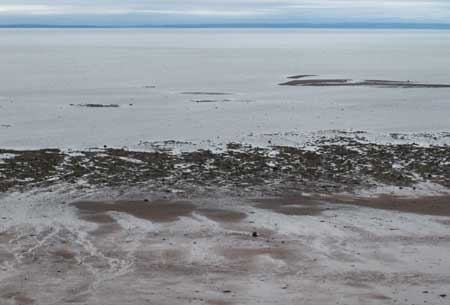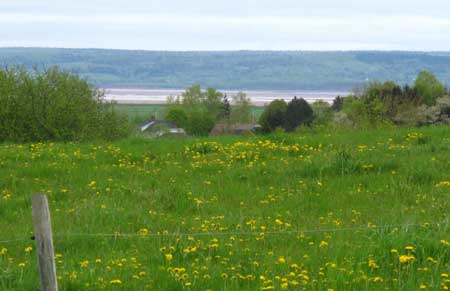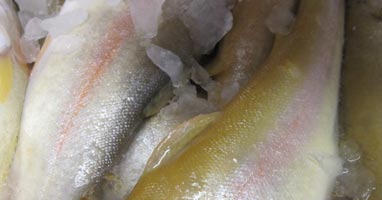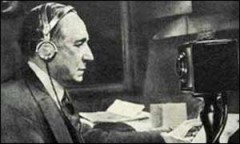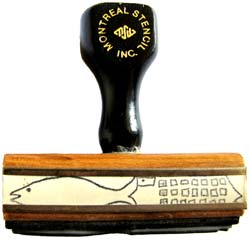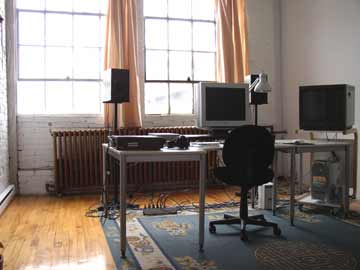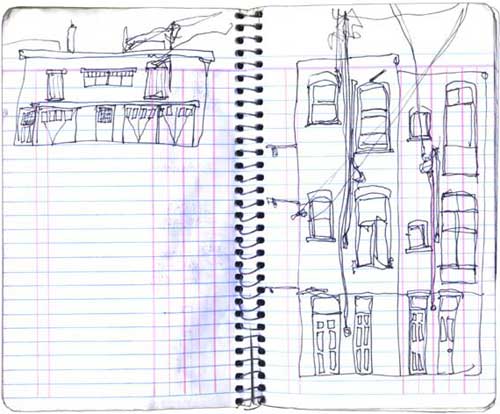MiT5 whizzed by in a drizzly blur. As one panellist noted: The weather in New England is a lot like the weather in Old England. Water logged lab rats, we scurried through MIT’s campus maze, almost but not quite able to get where we were going without going outside. The conference theme: “creativity, ownership and collaboration in the digital age.” There was less talk of ownership than of appropriation. Sadly no amount of creativity or collaboration could rid the digital age of rain.

Speaking of ownership, last month I lost my travel umbrella. Last week I replaced it with a used and improved one, liberated from the Lost and Found of the bar where a friend works. This semi-ill-gotten umbrella dripping at my feet, I squirmed uneasily through more than one academic paper cavalierly condoning remix culture’s five-fingered appropriation of other people’s images texts structures and ideas. The Colbert report got high marks for opening itself up to user editing. Nice advertising for Colbert. Hip-hop was idealized for it’s sampling and remixing of culture. Great for the producers, great for the moguls, but not so hot if you’re an up and comer being told what to sample so it sells, or if you’re an indi-artist getting your beats ripped, or if you’re a consumer tired of the radio play list mix. MiT5 did not seem to be critical of what was being sampled. No place to say: no more songs about guns, bitches and hos.
Me: What nobody’s talking about here is money. Academic: Oh, there are plenty of other environments to talk about money in. Give me a break. Though this view appeared to be the prevalent one, I don’t buy it (no pun intended). I worked in the software industry for so long, my critique is tinged with scepticism. After sifting through executive staff rhetoric, world wide sales projection optimism and the codified concerns of corporate lawyers, the stated themes of MiT5 sounded naïve at times, trite even, when divorced from any economic consideration.
There are economics at play in who gets to attend a conference. Not every panellist was an academic and not every academic was staying in a hotel paid for by his university. One professor told me that as an educator he felt he had to stay to hear that evening’s plenary, but as a human being he couldn’t bear it, and besides, he had a three-hour drive home. Another didn’t have his laptop with him because he was staying at a youth hostel. Instead he spent his evenings reading poetry and walking the streets of Cambridge. Nice. Yet another professor was staying in Allston. Actually, he was a research fellow. But still. He had my respect. Allston, that’s keeping it real.
I remain impressed by and grateful to MIT for keeping the Media in Transition conference series free of charge and open to an incredibly broad spectrum of presenters. That can’t be easy. I was especially pleased to see how many more artists presented at MiT5 than at MiT4. I wish I’d made it to more presentations. 25 people speak at once. Far too often there are four people to a panel. If even one paper runs long – the height of unprofessional rudeness, but sadly the norm – the rest get squeezed, leaving no time for discussion.
Like most of the artists I spoke to, the only way I could afford to attend this conference was by taking the Greyhound down and staying with a friend. At the end of each day, the #1 Bus shuttled me from the pillars and porticos of MIT to cracked-out Roxbury, where my friend Lana lives in a loft next door to a boarded up drug store. She says people used to smoke crack underneath the DRUGS sign, until someone stole the sign. They still smoke crack there but now it’s less ironic.

One morning, a woman with drug-rotten teeth tried to get me to take her kids on the bus for her, to save her the fare. Just picture me and two crack babies busting in on some gamer theory session broadcast live on Second Life.
Sometimes real life, Second Life and conference life just don’t synch up. I missed some early sessions because my hostess doesn’t sleep. One night we stayed up late rewriting all her artist’s statements – not exactly collaboration, but after all the conference talk about authorship and overwiting, I felt it my duty as a guest to earn my keep by translating her garbled visual art speak into actual English. Another night we stayed up late making a movie. She tried to hold the camera steady, tried not to laugh, while I told a long story about how I happened to have two dramatically different maps in my notebook, drawn by two dramatically different girls, both giving directions to a notorious party spot in Banff known as The House of Sin.


The notebook as interface, the non-linear story as tangent engine. Just like Entre Ville, we realized in the morning. http://luckysoap.com/entreville
I like conferences, despite their occasionally glaring disconnection from real life. And I like real life, despite its occasionally disheartening disconnection from how life ought to work in theory. I especially like the occasional blurring of the two. Most of the breakout sessions were held in classrooms. Artists and academics projected web and PowerPoint presentations onto white screens bracketed by black blackboards covered with mathematical equations surely few if any of us could understand. Conference attendees mingled with students in the hall. I got a student discount on lunch one day!
In the Bartos Media Lab audience members watched the conference unfolding in real-time on stage. Some doubled up on the real by following along on their laptops the plenary sessions broadcast live on Second Life. The sound of typing surged whenever something clever was said. Someone stepped up to the mike to comment on our cultural condition of constant divided attention. A flurry of typing followed. A rainfall of fingers keyboard tapping, I wrote in my notebook.
It rained all weekend, typing and the wet stuff. Thanks MIT, for mixing up art and academics, theory and practice, for offering up so much information to such a broad audience in such a short period of time. A lot to soak up. And only time for tip of the iceburg comments here. I’ll be sorting though my notes for a long time.
. . . . .

